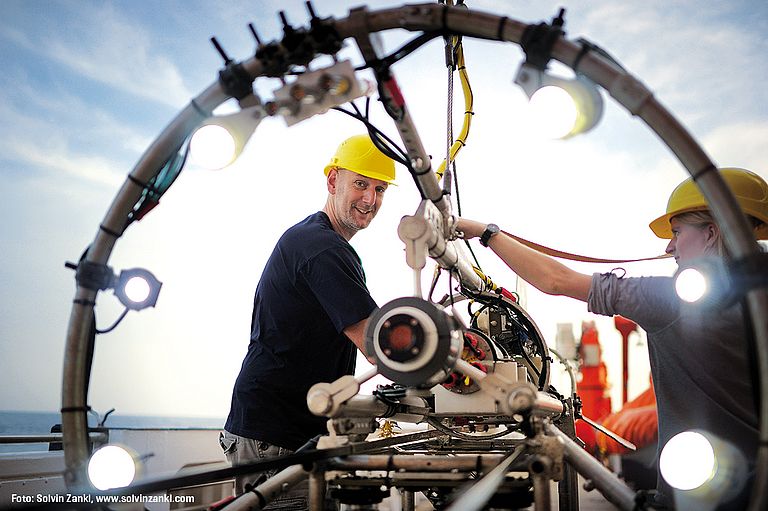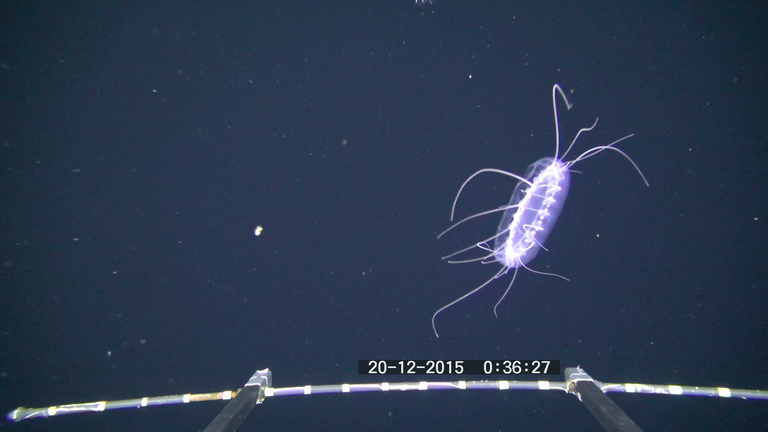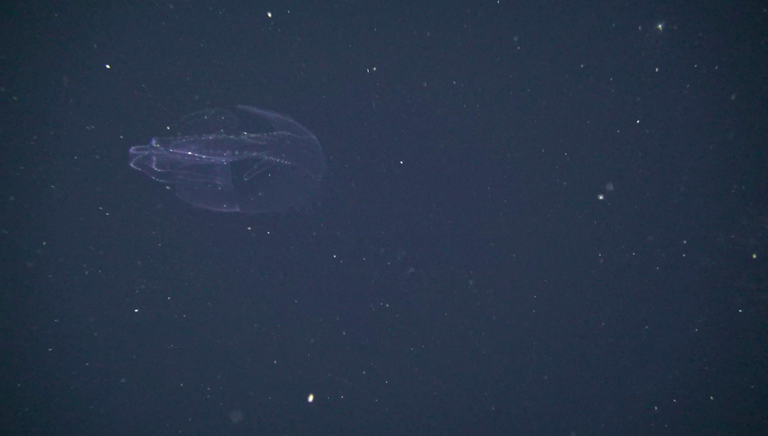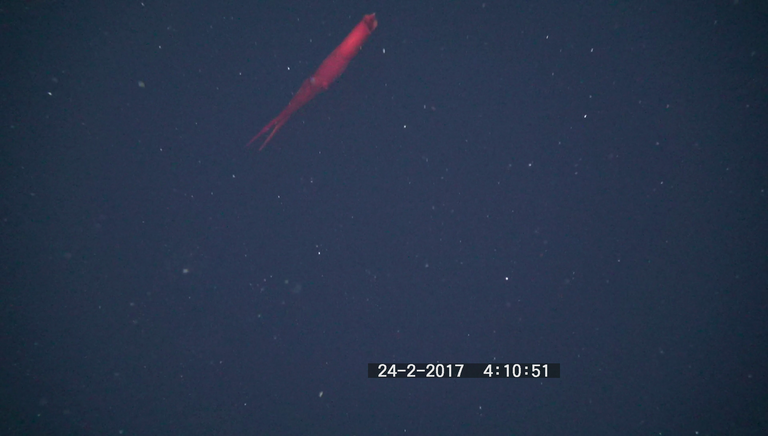Image of the month: April 2017
PELAGIOS: New insights into the deep sea
The open ocean is the largest environment on our planet. The so called "pelagic zone" reaches from the surfaces waters down to the ocean floor. In many parts of the pelagic ocean, no scientific sample or observation has ever been collected. The pelagic in situ observation system PELAGIOS is a ship-towed camerasystem made to explore exactly that zone. Up to date the device has been deployed down to a depth of 1500 meters and has delivered some spectacular images.
Up to date one of the only ways to observe organisms of the pelagic zone is to catch them with a net. In contrast the new camerasystem makes it possible to catch what otherwise passes through the net. PELAGIOS is especially designed to observe the gelatinous fauna. With nets these fragile animals are normally destroyed because of their gelatinous consistency.
The photo by nature photographer Solvin Zankl was taken during the expedition MSM49 on board of RV MARIA S. MERIAN in the eastern tropical Atlantic. It shows Dr. Henk-Jan Hoving in the process of getting PELAGIOS ready for the next dive. With the camera system they wanted to investigated the influence of oxygen minimum zones on the number and distribution patterns of organisms living in the open water. Gelatinous zooplankton organisms are especially known to live in precisely these hostile environments. Approximately 80 hours of film material was produced during the cruise, which captures a large number of organisms with a size larger one centimeter.
If you want to go on a short dive with PELAGIOS follow the link: Dive with PELAGIOS






